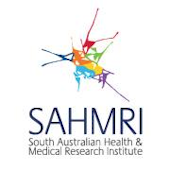
South Australian Health & Medical Research Institute

The South Australian Government commissioned the Review of Health and Medical Research in South Australia, conducted by Professor John Shine and Mr Alan Young AM, which recommended the establishment of a dedicated, flagship research institute for South Australia.
In response to this recommendation, the South Australian Government committed to establish SAHMRI in 2008, and the Federal Government allocated $200 million to build our research facility. In December 2009, SAHMRI was incorporated as the state’s first independent flagship health and medical research institute.
As a new entity, SAHMRI will significantly increase the nation’s capacity for leading scientific research by:
- Building a team of more than 600 outstanding researchers, who will work together in the search for better treatments and cures for some of the world’s most challenging diseases
- Creating a world-class precinct of medical research and clinical application, with state of the art laboratories and equipment in a purpose-built, iconic, 25,000 square-metre facility, adjacent to the site of the new Royal Adelaide Hospital (new RAH)
- Actively fostering and nurturing a new generation of the top research minds, and undertaking extensive and interactive community engagement and education programs.
Links
Displaying 1 - 20 of 36 articles

A proof-of-concept study using bacteria shows cell therapy can detect tumours – and may one day be able to treat them.

Autophagy may be Nobel-winning research, but so far there’s no evidence that boosting how your cells recycle nutrients makes you live longer or lose weight.

The COVID pandemic has increased the strain on an already troubled mental health system in South Australia. Now, the state’s outgoing mental health boss is calling for accountability and change.

For many of us, becoming ill with a virus might put us on the couch for a week or two. But for some people, contracting a viral infection can cause lifelong debilitating symptoms.

US researchers have revealed the molecular ‘key’ that allows the 2019-nCoV virus to gain access to our cells. And they found it is many times more tenacious than the previous SARS virus.

¿Alguien cercano le ha pedido que trabaje menos? ¿Se siente culpable por no pasar más tiempo con los amigos o la familia? Puede que sea hora de cambiar.

People with fibromyalgia live with chronic pain all over their body. And not all treatments work for everyone.

It can be difficult to understand all the ‘add-on’ procedures available with IVF. A new study finds one popular fertility technology, ICSI, is being offered to couples it might not be suitable for.

Has anyone close to you asked you to cut down on your work? Do you feel guilty that you’re not spending enough time with your friends, family or even yourself? It might be time for change.

Although a US study found a spike in teen suicides after 13 Reasons Why first aired on Netflix, rates of suicide are generally on the rise. The last thing we should do is shy away from the show.

If you’re ready to come off antidepressants, it’s important to tread carefully. About one in five people experience withdrawals, and it’s possible to fall back into symptoms of depression, too.

Semi-identical or sesquizygotic twins occur when two sperm fertilise one egg. A boy and a girl in Brisbane are only the second set of semi-identical twins known in the world.

If you’re one of the one in six Australian couples experiencing infertility, you’ve probably thought about IVF. Here’s a step by step breakdown of how it all works.

As you age, your body deteriorates and your risk of disease and injury increases. Here’s a decade by decade guide to what you’re up against – and what you can do about it.

A Senate Report has put forward 16 recommendations to reduce rates of stillbirth in Australia targeting a 20% reduction in the rate within three years. We can do this by focusing on five practices.

En cas de traitement antibiotique, la prise de probiotiques peut protéger des effets secondaires désagréables. Mais elle risque aussi de retarder le retour à la normale du microbiote intestinal.

A new review of 70 studies involving nearly 20,000 women found taking omega-3 supplements in pregnancy reduces the risk of premature labour.

Probiotics might avert a case of diarrhoea, or they could mean your gut takes longer to return to normal.

What do stats really mean in the real world? Here’s an example from leukaemia research to help you identify if a result really is important.

Once upon a time, a group of disheartened scientists found their tearoom bereft of teaspoons. They explored the problem with a longitudinal study design.
